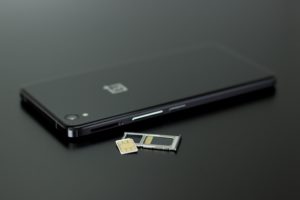 It’s joked about often that the younger generations are permanently attached to technology — but given how handy smartphones are, can we really blame them? When it comes to traveling abroad, having quick access to everything from digital maps to translation services on one pocket-sized device can make your trip infinitely easier.
It’s joked about often that the younger generations are permanently attached to technology — but given how handy smartphones are, can we really blame them? When it comes to traveling abroad, having quick access to everything from digital maps to translation services on one pocket-sized device can make your trip infinitely easier.
Finding service to power your smartphone while abroad can be a challenge. There are a few different options that vary widely in price and effectiveness. Before you head off on your international trip, here’s what you need to know about staying connected:
The Primary Options
There are three main options for keeping your smartphone (and other electronic devices) connected while abroad: an international SIM card, local SIM card, or a travel WiFi hotspot. An international SIM card helps your phone connect in other countries, but this option comes with a higher price tag because your cell service provider will need to contract with cell service providers around the globe to provide you with a connection. Likewise, most portable WiFi hotspot devices can be pricey because they run off the same system. Generally speaking, a local SIM card is considered the more cost-effective option, but is it really?
International SIM Cards
The big benefit of a local SIM card is that it makes your phone function on a local provider’s system by simply swapping out your phone’s usual SIM card and replacing it with a new, local one for the duration of your trip. You get to keep your apps, your photos, and any other data stored on your phone. Generally, an international SIM card means paying a start-up fee and then enjoying the local price for either contract or pay-as-you-go options.
The downside is that most international SIM cards only work in the country and with the provider for which it was issued. So, if your travels will take you hopping across Europe, you’ll need to get a new SIM card each time you cross over into a new country. That means new expenses for each border you cross. If you’ll be in one country for the entirety of your trip, a local SIM card might make sense. If not, an international SIM card from your usual provider is going to be about the same cost as multiple local SIM cards.
The other problem with a local SIM card is that you’re forced to wait until you arrive in the country to buy one, which can increase hassle and impede some of the moments you need an internet connection the most.
Travel WiFi Hotspot
The alternative is to find an option that lets you pay like a local without grabbing a new SIM card in every country. Most travel WiFi hotspot devices work on the same signal that your smartphone uses. However, Sapphire travel WiFi combines the best of both worlds. Our smartphone-sized device provides travel WiFi signal at local prices — without swapping SIM cards every time you go to a new country. Simply power up your Sapphire, connect to a WiFi-enabled device, and choose your country and plan. When it’s time to change countries, simply select the appropriate option and your Sapphire will connect your travel WiFi as soon as you need it.
Learn more and grab your Sapphire international WiFi device online today.
